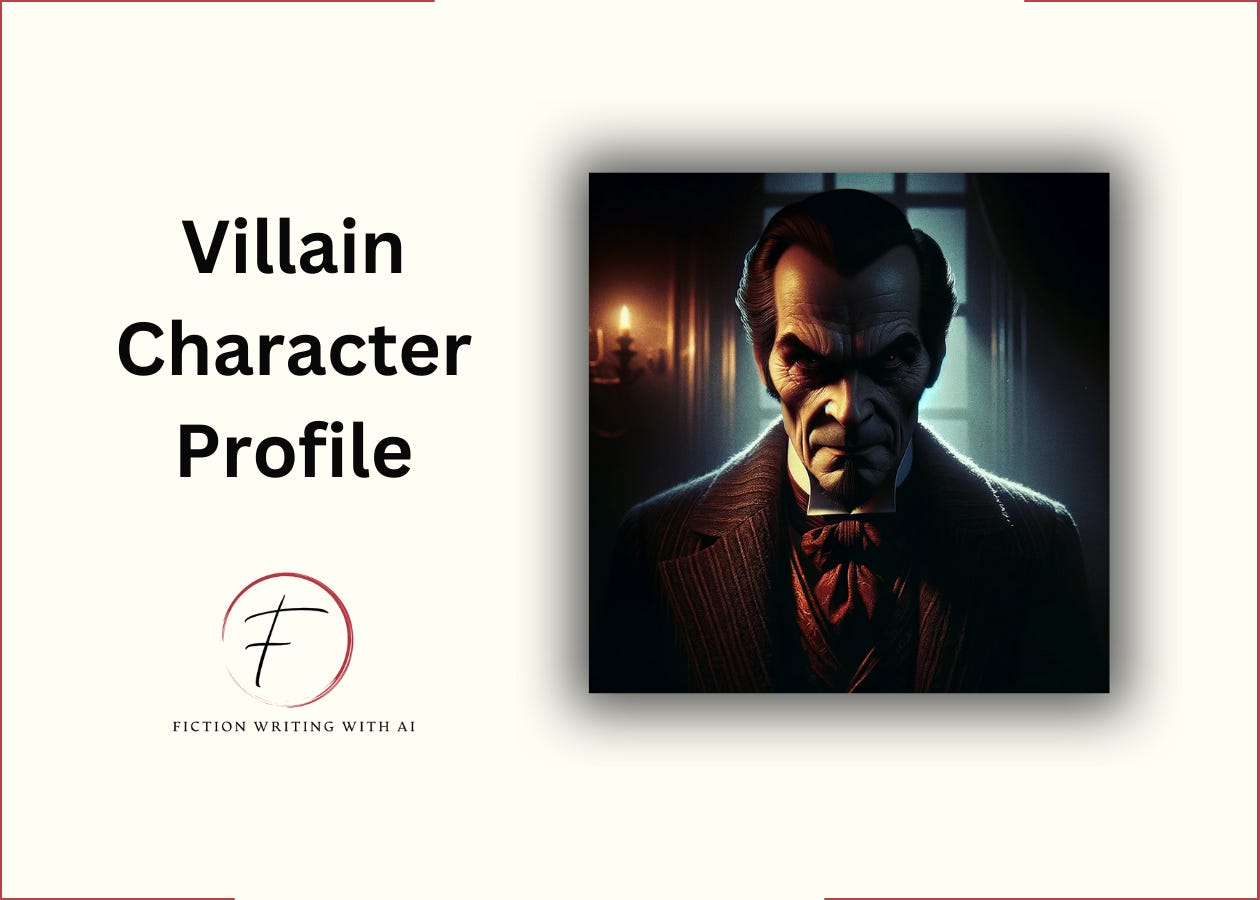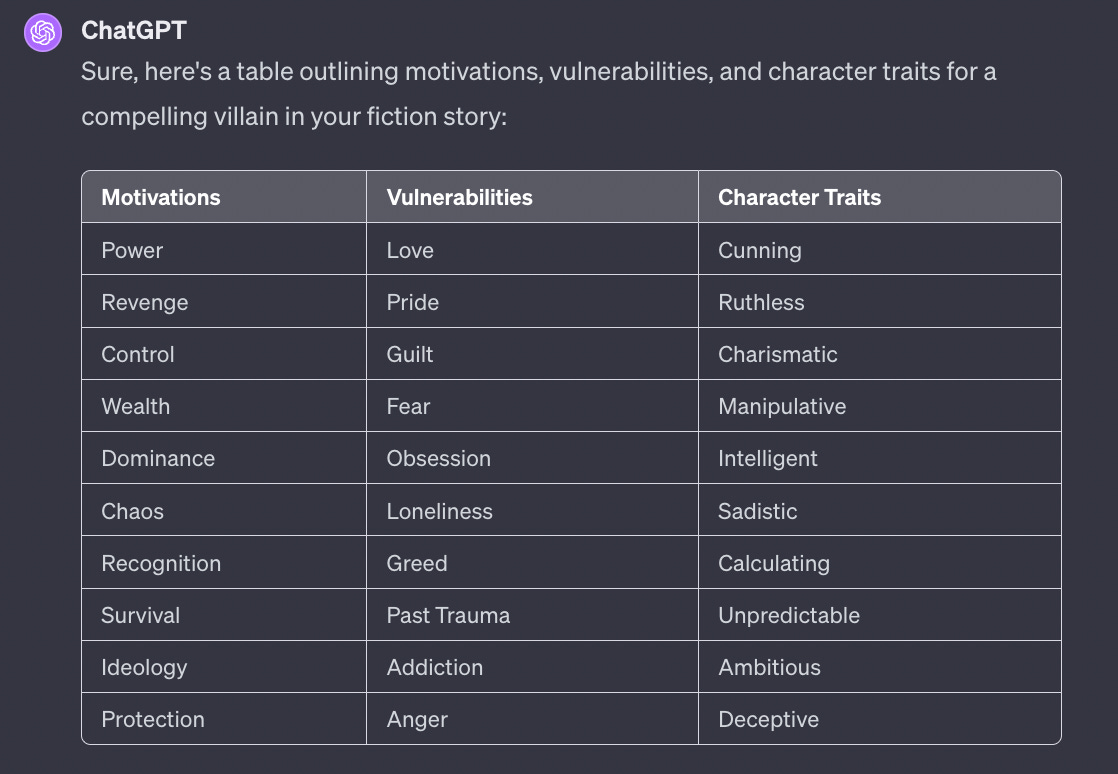Foiled!
“I could have made a million bucks, if it weren't for you pesky kids and that dog!” - Mr. Dayton, aka The Samurai Ghost in the Now Museum, Now You Don’t episode of Scooby Doo
The hero wins the day. It’s a story we love no matter what. But what’s winning without someone or something to make the win sweet?
Thus is the job of the villain in your story.
Most villains are made to hate:
Sauron (The Lord of the Rings)
Voldemort (Harry Potter)
Scar (The Lion King)
And some villains are made to love:
Loki (Marvel Universe)
Darth Vader (Star Wars)
Hannibal (Silence of the Lambs)
But love them or hate them, where would your favorite story be without them?
No suspense. Flat plot. No challenge. And a boring story. No one is going to read, “The Unremarkable Risk Free Easy Heist” novel. You would think it would be easy to create a villain—just make them the antithesis of your hero, right?
Close. However, if they're too one-dimensional, they become a caricature. Make them too sympathetic, and they upstage your protagonist. It’s a delicate balance.
The good news is, with AI, it’s easier than ever!
But before we get to our ChatGPT prompt, let’s dig into what makes a great villain.
What Makes A Compelling Villain
The most memorable villains are nuanced.
They force the audience to both fear them and empathize with them. They are multi-dimensional with complex motivations and backstories that make their evil actions understandable, if not condonable.
For example:
Norman Bates from Psycho believes he is protecting his mother while committing horrifying acts. Protecting our loved ones is a worthy cause, right?
Darth Vader turns to the “dark side” in a quest for power. And his positive past makes you secretly root for him.
Nurse Ratched from One Flew Over the Cuckoo's Nest is cold and calculating. She abuses her authority. She’s subtly ruthless. And she’s a threat to her innocent patients.
A compelling villain elevates the entire story.
So, how do you create your villain?
7 Tips To Create A Villain Your Reader Will Love (And Hate)
1. Give Them Powerful Motivations
The best villains have clear motivations that drive their actions.
Maybe they’re seeking revenge for past wrongs or want to gain money and power. Were they betrayed by a loved one? Did they suffer a tragedy?
Whatever it is, make sure their goals feel justified—from their perspective.
2. Make Them Likable
Give your villain admirable traits.
Make them intelligent, witty, charming, attractive—anything that elicits a grudging respect. Pure evil is boring. People are drawn to villains who exhibit humanizing characteristics.
The more likable they are, the more unsettling their dark side becomes.
3. Reveal Their Vulnerabilities
Just like heroes, villains need flaws and weaknesses.
For example, a villain who secretly loves animals or children shows they have a moral code, even if it's skewed. A villain afraid of death reveals they are as mortal as anyone else. Quirks like knitting or coin collecting demonstrate they have hobbies and interests beyond evil plots.
Small touches humanize your villain, blur the lines between good and evil, and prevents them from becoming a one-dimensional “mwah ha ha” caricature.
4. Drop Hints About Their Past
The most chilling villains are the ones who could have been heroes.
Tie their defining traits and tendencies back to their past. For example, if they distrust others, demonstrate how they were deceived before. Allow readers glimpses into the inner workings of your villain’s mind. Slowly reveal details about their past experiences that shaped them.
Keep readers guessing about their true nature.
5. Tap Into YOUR Dark Side
Really put yourself in the villain’s shoes.
Channel sinister qualities and imagine what would drive you to such extremes. Think about the parts of yourself that you try to suppress: your anger, jealousy, greed, and hunger for power. Imagine what might happen if you let those qualities take over, without regard for ethics or morals. Take whatever deviant impulses you discovered, dial them up to 11, and have fun getting inside the twisted psychology that shapes your villain's worldview.
It’s frighteningly easy to find the villain within yourself.
6. Make Their Look Memorable
Give thought to the villain’s physical appearance, style of dress, quirks and props.
But beware making them more grotesque than villain’y. Too much blood = closed book. Their look should hint at their twisted nature not turn your reader away.
Hairstyle, facial features, dress, scars, and body language all play a key role in making a menacing iconic villain—perfect for AI tools like MidJourney and DALL-E.
7. They Are The Hero
Villains shouldn’t see themselves as evil.
In their mind, they are the hero of the story. Their actions, no matter how despicable, are justified or even necessary in their eyes. Reveal how they rationalize their behavior as being for the greater good.
Moral complexity makes a great villain.
Boom!
Now let’s see if we can get AI to help.
How To Craft a Unique Villain Using AI
We are going to train ChatGPT to create a villain by combining ideas from the 7 tips above so you can write a bad guy into your story.
To do this, all you need are 3 things:
A Primary Motivation
A Primary Vulnerability
And 3 Character Traits
ChatGPT will do the rest!
And if you need help getting started, run the below prompt to get a few ideas.
Step 1: Choose Your Villain’s Motivations, Vulnerabilities, & Traits
I need help brainstorming ideas for a villain in my fiction story.
Please list 10 motivations, 10 Vulnerabilities, and 10 Character Traits that make a great villain.
Please put them in a table.
Use 1 word for each result.
Choose the attributes you want your villain to embody and then run the next prompt.
Keep reading with a 7-day free trial
Subscribe to Fiction Writing With AI to keep reading this post and get 7 days of free access to the full post archives.






